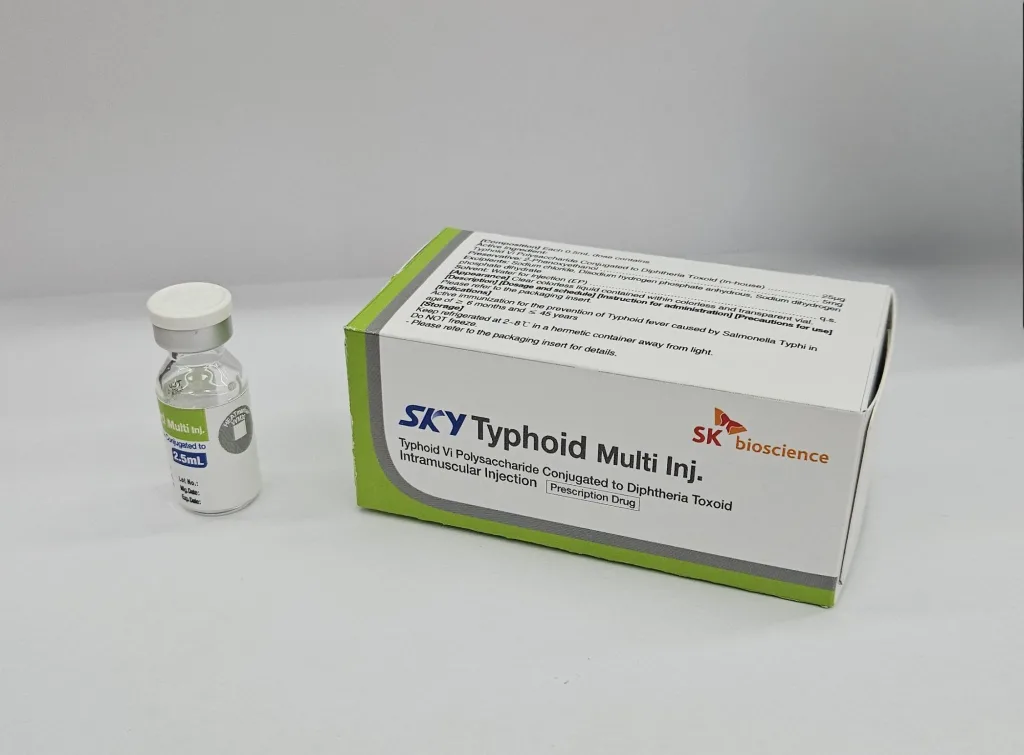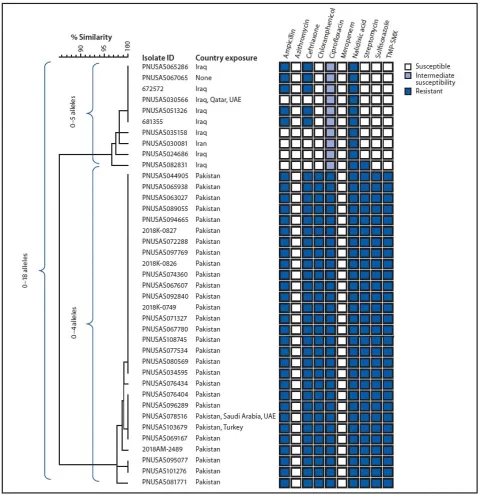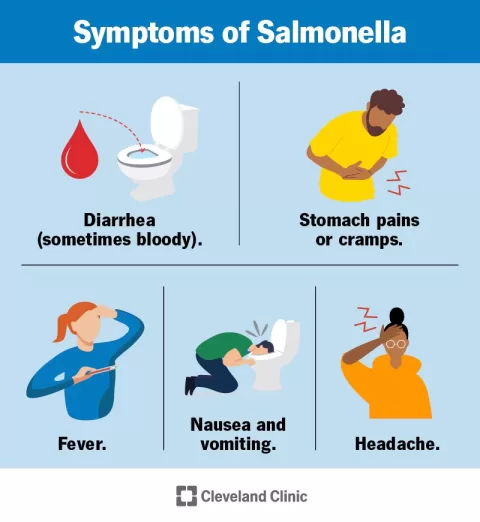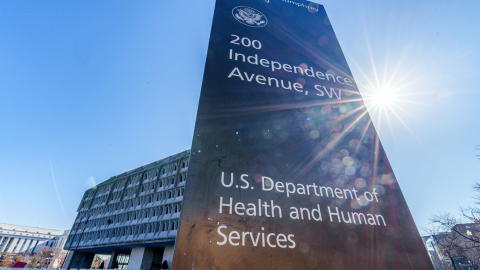The introduction of the typhoid vaccine marks a significant milestone in the fight against typhoid fever and the dangerous non-typhoidal Salmonella infections that disproportionately impact children in developing countries. Recent findings from a phase 1 vaccine trial conducted by a dedicated team at the University of Maryland have revealed that a novel trivalent Salmonella conjugate vaccine (TSVC) successfully elicits a strong immune response while maintaining a safe profile. With typhoid fever leading to thousands of deaths annually, especially in sub-Saharan Africa, this advancement could be a game-changer for public health. The potential of this Salmonella vaccine not only promises to protect against acute infections but also aims to curb the rising incidence of morbidity and mortality among vulnerable populations. As research progresses, the implications for pediatric health are becoming increasingly hopeful, marking steps towards a healthier future for at-risk children everywhere.
In the realm of infectious diseases, the advancement of a vaccine designed to combat typhoid fever and non-typhoidal Salmonella represents a breakthrough in global health initiatives. The recent phase 1 trial results have excited researchers, as the newly formulated vaccine demonstrates an impressive ability to generate a robust immune response in participants. Both typhoid and invasive non-typhoidal Salmonella diseases pose significant threats, particularly among children in regions burdened by limited healthcare resources. This innovative immunization strategy aims to provide comprehensive protection, thereby reducing the burden of these critical illnesses. As investigations continue, the prospects of this vaccine’s efficacy and safety bring optimism for better disease management and prevention strategies globally.
Understanding Typhoid Fever and Non-Typhoidal Salmonella
Typhoid fever, caused by the bacterium Salmonella enterica serovar Typhi, remains a significant public health challenge, particularly in developing countries. Every year, millions of cases are reported, with children being particularly vulnerable to severe outcomes. The disease typically manifests as prolonged fever, abdominal pain, and gastrointestinal upset, which can lead to serious complications if left untreated. Non-typhoidal Salmonella (NTS), encompassing various serovars like Typhimurium and Enteritidis, causes a considerable burden of illness and mortality, especially due to invasive infections in children. Understanding the challenges posed by these diseases is crucial as we seek to improve health outcomes through vaccination strategies.
The dual burden of typhoid fever and invasive NTS infections underlines the urgent need for effective interventions, especially in regions where healthcare resources are limited. In sub-Saharan Africa, the mortality rates from these infections are particularly alarming, with thousands of pediatric deaths reported annually. Consequently, researchers are exploring novel vaccine approaches that could target both strains, ultimately aiming to alleviate the health crisis linked to these infectious diseases.
Vaccination stands as one of the most effective strategies to reduce the incidence of typhoid fever and the deadly effects of non-typhoidal Salmonella. Current vaccines, while beneficial, often have limitations in terms of duration of immunity and effectiveness against various strains. The recent phase 1 trials of the trivalent Salmonella conjugate vaccine (TSVC) are promising, as they aim to elicit a robust immune response that could be sustained over time. Administering an effective vaccine could significantly lower the cases of both typhoid and NTS infections, leading to better survival rates among vulnerable populations, particularly children.
The Promising Results of the Trivalent Salmonella Conjugate Vaccine (TSVC) Trial
Recent studies have shown that the trivalent Salmonella conjugate vaccine (TSVC) generates a strong and effective immune response in adults, laying the groundwork for potential use in children. In the phase 1 clinical trial conducted by UM School of Medicine, the researchers demonstrated that TSVC is not only safe but also well-tolerated, yielding significant immunogenicity. This response is critical as it highlights that TSVC may serve as a pivotal vaccine capable of providing protection against both typhoid fever and invasive non-typhoidal Salmonella infections. These findings bolster the hope that TSVC could integrate into existing immunization schedules, particularly in high-risk populations.
Furthermore, the vaccine’s design, combining targeted polysaccharides and flagellin carrier proteins, enhances its potential effectiveness. The trial’s results indicated no serious adverse events among participants, reinforcing the promise of TSVC as a viable option for combating these severe diseases. As researchers continue to explore this vaccine’s potential, larger clinical trials are already being planned to evaluate its efficacy among children, thereby addressing a critical gap in current vaccinations against Salmonella pathogens.
The implications of the successful outcomes observed in the TSVC trial are substantial. If proven effective in larger cohorts, TSVC could become a game-changer for public health, particularly in regions heavily impacted by typhoid and NTS. The need for a single vaccine addressing both types of infections is paramount, as existing measures often fall short due to strain variability and inadequate coverage. As noted by Dr. Mark Gladwin, TSVC could significantly improve global pediatric health if it successfully protects against the leading causes of childhood morbidity and mortality in endemic areas. It represents a significant advancement in vaccination against invasive pathogens.
The Role of Immunogenicity in Vaccine Development
Immunogenicity is a crucial aspect of vaccine development, referring to the ability of a vaccine to provoke an immune response. In the context of the TSVC trial, researchers have successfully induced a robust immune response among the participants, affirming the vaccine’s potential utility in combatting typhoid fever and non-typhoidal Salmonella. Measuring the serum immunoglobulin G (IgG) response indicated that all subjects, regardless of their dosage, demonstrated significant antibody production against the vaccine’s polysaccharide components. Such results are pivotal in establishing the vaccine’s capability to confer protective immunity against future infections.
In developing effective vaccines, ensuring a strong immunogenic profile is essential for maintaining long-term efficacy. The strong immune responses observed in the TSVC trial not only signify a successful initial outcome but also point to the potential durability of the protection it offers. With continued research that maps the immune landscape post-vaccination, scientists aim to optimize TSVC for future use and determine the best immunization strategies to maximize its public health benefits.
Moreover, understanding how previous exposure to Salmonella may affect immune responses is critical in vaccine development. The results from the TSVC trial indicated some participants had an enhanced immune response, hinting that prior exposure to the pathogen might facilitate a more vigorous immune activation. This correlation suggests that incorporating facets of natural immunity can play a significant role in shaping the development of future Salmonella vaccines. As researchers delve deeper into these dynamics, they can create tailored vaccination strategies that account for populations with varying exposure histories, thus optimizing the overall efficacy of vaccines designed to combat typhoidal and non-typhoidal Salmonella.
Next Steps in Vaccine Trials and Future Directions
The promising results from the TSVC phase 1 trial mark just the beginning of a comprehensive investigation into the safety and efficacy of this novel vaccine. Researchers at UM School of Medicine are already strategizing the next stages, including trials aimed at assessing immunogenicity and safety specifically in younger populations, including infants and toddlers. This focus on vulnerable groups is vital, as children in many high-burden regions, such as sub-Saharan Africa, are at the highest risk of severe bacterial infections associated with Salmonella.
Conducting larger phase 3 field trials will be crucial to confirming the protective efficacy of TSVC and assessing its potential integration into existing vaccination schedules. These trials will not only provide valuable data on the vaccine’s long-term efficacy but also allow researchers to explore whether TSVC can be co-administered with routine childhood vaccines, enhancing healthcare delivery in areas with limited resources.
In addition to evaluating safety and efficacy, the clinical research regarding TSVC aims to understand broader implications for public health programs. The ability to prevent typhoid fever and invasive non-typhoidal Salmonella infections through a single vaccine could revolutionize pediatric healthcare in endemic regions. The profound belief within the research community is that early intervention through vaccination can drastically reduce morbidity and mortality, paving the way for improved health outcomes and quality of life for children bom in high-impact areas. The potential integration of TSVC into global vaccination strategies heralds a new era in efforts to combat vaccine-preventable diseases.
The Importance of Multivalent Vaccines in Public Health
Multivalent vaccines, those designed to protect against multiple strains or disease-causing agents, play an increasingly crucial role in modern public health strategies. In the case of the TSVC, the vaccine aims to target both typhoidal strains of Salmonella and prevalent non-typhoidal variants. This comprehensive approach is critical as it addresses a dual public health threat in regions where such infections are endemic, thereby maximizing the impact of vaccination efforts. By combining protective elements against multiple pathogens, a multivalent vaccine can reduce the overall burden of infectious diseases and streamline immunization programs, making them more efficient and effective.
The advantages of multivalent vaccines are manifold, especially in resource-limited settings where healthcare infrastructure may be inadequate to support separate vaccination campaigns. By delivering immunity against several pathogens in a single dose, healthcare providers can optimize their immunization schedules and increase vaccine uptake among communities, particularly in vulnerable populations like children. This can lead to significant declines in disease incidence, ultimately enhancing overall public health outcomes.
Furthermore, the development of multivalent vaccines can also stimulate research and innovation within the field of immunology and vaccine technology. As seen with TSVC, collaboration between various institutions leads to the creation of vaccines that incorporate advanced knowledge of pathogen biology, immune response mechanisms, and technological advancements in vaccine delivery systems. The competitive push toward developing multivalent options encourages global partnerships and resource sharing, which is essential for addressing complex public health challenges. Moving forward, further exploration of this model will be important to combat a range of infectious diseases effectively.
Frequently Asked Questions
What is the typhoid vaccine and how does it work?
The typhoid vaccine, specifically the trivalent Salmonella conjugate vaccine (TSVC), is designed to protect against typhoid fever and invasive non-typhoidal Salmonella (iNTS) infections. It works by eliciting a strong immune response through a combination of polysaccharides and carrier proteins that target the bacteria responsible for these diseases.
Who should receive the typhoid vaccine?
The typhoid vaccine is particularly important for children living in regions where typhoid fever and non-typhoidal Salmonella infections are prevalent, such as in parts of Africa. It may also benefit travelers to these areas and those in contact with individuals who are carriers of Salmonella.
What are the recent advancements in typhoid vaccine research?
Recent advancements include promising results from a phase 1 trial of TSVC, which demonstrated a strong immune response and safety profile in a small group of healthy adults. Ongoing research aims to evaluate the vaccine’s efficacy in children and in larger populations.
How does the typhoid vaccine prevent typhoid fever?
The typhoid vaccine prevents typhoid fever by stimulating the body’s immune system to recognize and combat Salmonella enterica serovar Typhi, the bacteria that cause typhoid. This immune response helps to protect vaccinated individuals from future infections.
What is the significance of combining typhoid and non-typhoidal Salmonella vaccines?
Combining the typhoid vaccine with vaccines for non-typhoidal Salmonella addresses two major health threats in children, particularly in African regions. This comprehensive approach could significantly reduce illness and mortality rates associated with both types of infections.
Are there any side effects associated with the typhoid vaccine?
In the phase 1 trial of TSVC, no serious adverse events were reported. The most common side effects were mild to moderate, demonstrating a favorable safety profile for the typhoid vaccine.
What are the next steps in typhoid vaccine development?
The next steps include larger studies to confirm safety and immune responses, as well as a planned phase 3 field trial to establish the protective efficacy of the typhoid vaccine, particularly in infants and young children.
Can the typhoid vaccine be administered with other vaccines?
Research is ongoing to determine if the typhoid vaccine can be co-administered with routine childhood vaccines, which could enhance immunization efforts and improve overall pediatric health.
How long does the immune response from the typhoid vaccine last?
Initial findings suggest that the immune response from the typhoid vaccine persists for over a year, with antibody levels remaining significantly higher than baseline levels, highlighting its potential for long-lasting protection.
What impact could the typhoid vaccine have on global health?
If widely implemented, the typhoid vaccine could drastically reduce the incidence of typhoid fever and non-typhoidal Salmonella infections, which are significant causes of illness and death, particularly among children in developing regions, ultimately improving global health outcomes.
| Key Points | Details |
|---|---|
| Vaccine Development | The trivalent Salmonella conjugate vaccine (TSVC) is developed by UM School of Medicine and Bharat Biotech. |
| Immune Response | TSVC produced a strong immune response and was safe in a trial with 22 healthy adults. |
| Targeted Pathogens | TSVC targets Salmonella Typhi (typhoid) and two other serovars causing non-typhoidal Salmonella infections. |
| Public Health Impact | Could significantly impact pediatric health, especially in Africa where Salmonella infections are common. |
| Next Steps | Larger studies planned to evaluate safety and efficacy, especially in children. |
Summary
The newly developed typhoid vaccine, TSVC, offers promising results that could change the landscape of pediatric health globally. With a strong immune response observed in trial participants and a focus on protecting against both typhoidal and non-typhoidal Salmonella infections, this vaccine holds potential for saving countless young lives in regions heavily affected by these diseases. Further studies will be essential to confirm its safety and efficacy, paving the way for broader implementation.
The content provided on this blog (e.g., symptom descriptions, health tips, or general advice) is for informational purposes only and is not a substitute for professional medical advice, diagnosis, or treatment. Always seek the guidance of your physician or other qualified healthcare provider with any questions you may have regarding a medical condition. Never disregard professional medical advice or delay seeking it because of something you have read on this website. If you believe you may have a medical emergency, call your doctor or emergency services immediately. Reliance on any information provided by this blog is solely at your own risk.








